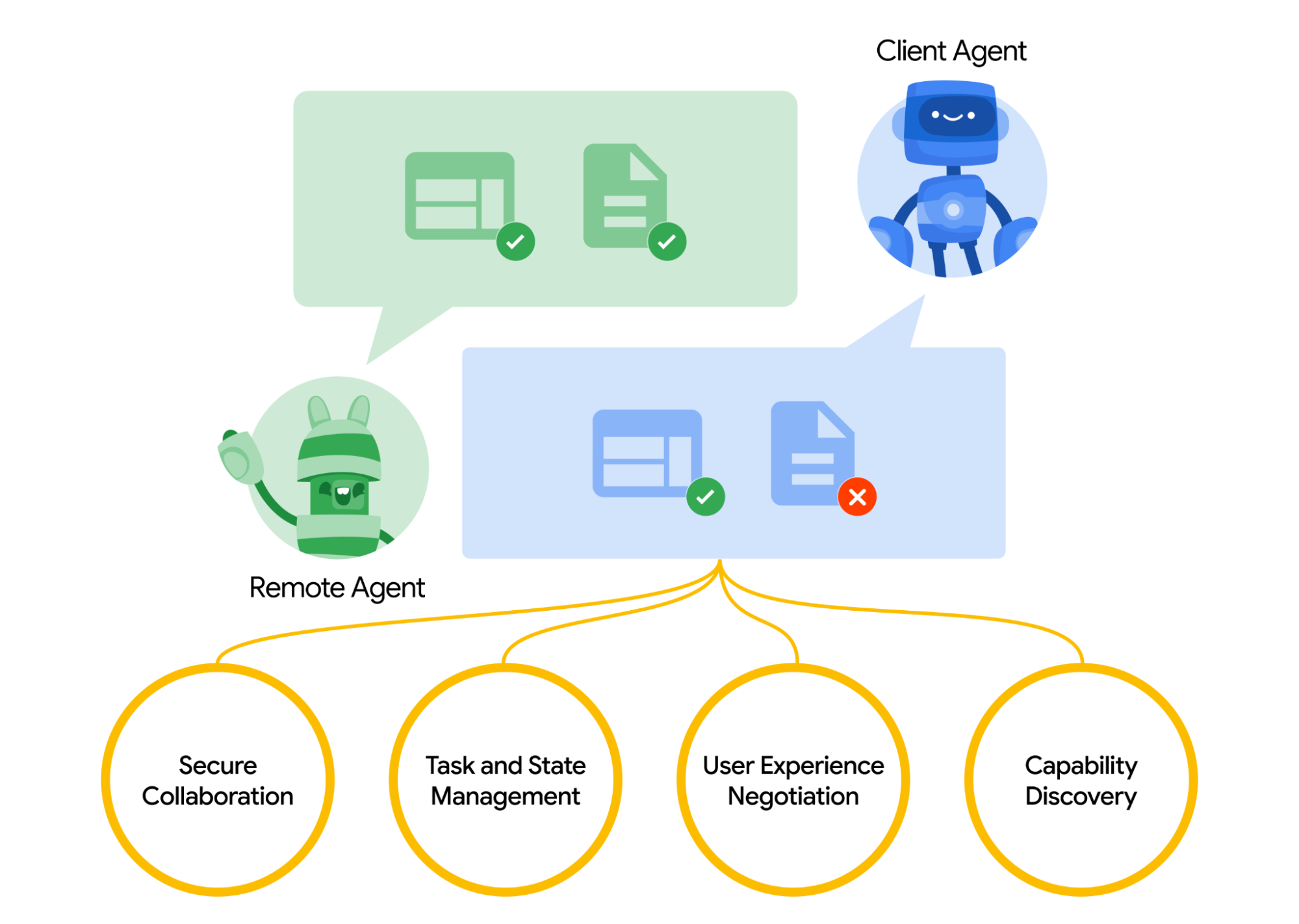MCP vs A2A
Explore the differences between MCP (and A2A, how they address distinct challenges in AI systems, and why combining them could power the next generation of intelligent, interoperable agents.
Just a year ago, most AI applications relied on monolithic interactions— one model, a few prompts at a time. But as we began pushing these systems into real-world scenarios, it became clear that isolated language models aren’t enough. You need models that can use tools, remember context, and even collaborate with other agents.
This shift is driving the need for standard protocols, ways for models and agents to interact with external systems in predictable, secure, and composable ways. Two of the most promising new standards are Model Context Protocol (MCP) and Agent-to-Agent Protocol (A2A)
While both aim to improve interoperability, they solve very different problems at different layers of the stack. In this blog, we’ll go deep into what MCP and A2A actually do, how they work, and when to use which.
What is MCP?
Large Language Models are powerful, but they have limitations:
- They’re stateless — no memory across interactions.
- They can’t directly access external tools or APIs.
- They rely on raw natural language, which is ambiguous and often insufficient for real-world automation.
Anthropic’s Model Context Protocol (MCP) addresses this by creating a standardized contract between the model and the external world. It enables developers to inject structured context, tools, and user identity into model calls safely and consistently.
MCP acts as the "middleware" between an LLM and your application’s data, tools, and user sessions.
If you're building with MCP, see how you can make MCP tools observable and governable across your org.
What is A2A protocol?
The Agent-to-Agent Protocol (A2A) enables interoperability between autonomous agents, meaning different AI systems or agents can discover, communicate, and collaborate across platforms. While the Model Context Protocol (MCP) focuses on integrating context and tools for a specific model, A2A addresses a broader challenge: how agents across different domains can work together seamlessly in a multi-agent ecosystem.
A2A is like the lingua franca for autonomous agents. If MCP is focused on a single agent’s context, A2A facilitates cross-agent communication.
Autonomous agents, whether for task automation, customer support, or multi-step workflows, often need to interact with each other to solve complex problems. For example, a shopping assistant might need to work with a delivery agent to complete an order, or a medical assistant might need to collaborate with a diagnostic tool to suggest treatments.
Without a standardized way for these agents to talk to each other, integrating them into real-world applications becomes messy and error-prone. A2A solves this by providing a standardized protocol for agents to interact and share tasks, context, and information securely.

How does A2A work?
- Capability discovery: Agents can advertise their capabilities using an “Agent Card” in JSON format, allowing the client agent to identify the best agent that can perform a task and leverage A2A to communicate with the remote agent.
- Task management: The communication between a client and remote agent is oriented towards task completion, in which agents work to fulfill end-user requests. This “task” object is defined by the protocol and has a lifecycle. It can be completed immediately or, for long-running tasks, each of the agents can communicate to stay in sync with each other on the latest status of completing a task. The output of a task is known as an “artifact.”
- Collaboration: Agents can send each other messages to communicate context, replies, artifacts, or user instructions.
- User experience negotiation: Each message includes “parts,” which is a fully formed piece of content, like a generated image. Each part has a specified content type, allowing client and remote agents to negotiate the correct format needed and explicitly include negotiations of the user’s UI capabilities–e.g., iframes, video, web forms, and more.
A simplified example:
- Agent 1: A virtual assistant handles calendar management.
- Agent 2: A task manager organizes to-do lists for the user.
- Agent 3: A travel agent finds the best flight options.
Using A2A, Agent 1 can discover Agent 2 (the task manager) and delegate tasks like "remind the user to book a flight." Then, Agent 2 can delegate to Agent 3 (the travel agent) to handle the flight booking, all through the standardized A2A communication protocol.
MCP vs A2A
Final thoughts on MCP vs A2A
It’s important to recognize that MCP and A2A solve different challenges. Instead of seeing it as MCP vs A2A, the future of AI and autonomous systems might lie in combining both.
MCP + A2A could provide a more holistic approach by allowing individual models to be context-aware and capable of collaborating with other agents seamlessly, opening new opportunities for highly integrated, scalable, and intelligent systems.
The combination of MCP + A2A has exciting possibilities for more efficient workflows, improved interoperability, and cross-domain collaboration, making them complementary rather than mutually exclusive.
